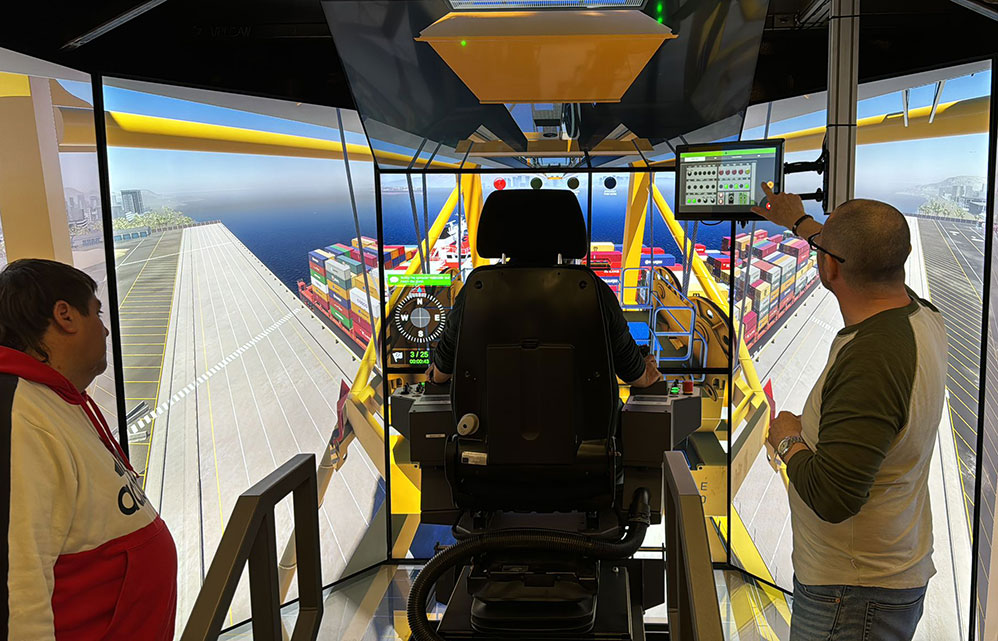Using state-of-the-art simulator SAAM Terminals trains crane operators

The team at San Vicente Terminal Internacional (SVTI), one of the company’s ports in Chile, has already been trained in Canada.
SAAM Terminals set the objective of training new crane operators and retraining current ones with improvement exercises. It invested US$500,000 in a state-of-the-art simulator from the Canadian company CM Labs Simulators.
“This equipment is pioneering in the Chilean port industry. It offers ground-breaking graphic realism and accurately emulates the movements and forces applied during crane operations. It features screens that replicate all operator viewing angles, providing an immersive experience. In addition, the sounds have been recorded from real equipment to make the simulation even more real,” said Gastón Moya, SVP Human Resources and Sustainability for SAAM Terminals.
The controls are replicas of those on the actual equipment so that exercises can be recreated in changing environments, and common failures can be simulated, significantly improving operator safety and performance.
“This simulator is a strategic asset for the company. Combined with the port specialty training packages developed with Fundación Chile and CEIM, it will enable us to train new operators and retrain existing ones, providing an essential tool for continuous skill development and efficient, safe operations,” added Moya.
One advantage is that the equipment is mobile and can be installed at any terminal operated by SAAM Terminals. Initially, the simulator will be installed at San Vicente Terminal Internacional (SVTI) in the coming weeks. Four crane operators from this port have already been trained in Canada and will be in charge of training their colleagues, initially at STS and MHC.
SVTI’s People Manager, Ignacio García, added, “We are very pleased to have this new tool at SVTI since it will allow us to improve worker training and coaching. This training will also enhance our operators’ careers, promoting talent development in the terminal and improving processes through digital transformation.”

